In the previous post, I described in great detail what we are going to do in the next few months. Today I would like to give you some insights into what was going on in my head when I was trying to launch that SaaS idea. This post is some kind of “behind the scenes” type of text. I’m going to show you how the idea was born, how I “validated” it, how much time and effort I invested in it, and finally how I failed. To sum it up, I will show you how to probably not start the project.
An idea was born
Like a lot of great ideas in this world, also this one had its dawn of time in… a drunk night. Well, I met my friend after a few months, and he said it would be cool to have a headhunter company. That company would verify developers and put them on their website in some kind of “auctions.” You may think of it as Amazon or eBay with developers ;). The idea popped up after I told him about the money I earned from recommending my friends for some job offers. As you can imagine, after a few shots, we were really optimistic about our great business model. We even talked about it a few times after that night. But an idea without execution is nothing, so suddenly it failed for its first time.
Later on, I was working on a project where such a reversed model of search used to work pretty well. That gave me extra energy to try one more time. I changed the idea quite drastically, as I wanted to remove everything, to skip the verification process and the need to run a headhunter company. The new idea was to just give developers the ability to add new advertisements – a simple CRUD application. On the other hand , there would be a search feature that recruiters would use. A few days of work and I could live my rich life ;).
At the same time, I read articles and listened to podcasts that were talking about problems in the hiring process. After “research,” I got to some conclusions that you can find in the previous post, so if you haven’t read it yet, catch up with it :). The idea was born at that stage, and my side project got the “DFS” codename, which stands for “Developers For Sale.” Yup, I know, sounds scary, but I can assure you – I was not objectifying developers ;). I had to think about a new name, and we will get to that soon. First, I would like to show you my business validation.
The idea’s “validation”
A real entrepreneur knows that before doing anything, the business idea should be validated. As an aspiring entrepreneur, I decided to create a pool. The problem was that I was pretty fixed on my vision of the final product, and I didn’t want to change it in any way. Instead of asking about pains in the hiring process, I asked users to anonymously leave their skills, desired location of work, and how much they would like to earn. Thanks to this, I was able to validate whether people are not afraid of sharing such a piece of information.
Ok, so at that point, I was set about what I was going to ask, but I had no idea where I could let people know about the pool. I had no audience at all. Asking people directly or on any Internet groups was a blocker for me. Luckily, a friend of mine is an IT blogger/vlogger, and he allowed me to put a short video on his vlog. That was actually an excellent idea, but at the same time, that’s the end of my entrepreneurial skills… Any business-oriented person would grab a smartphone to record a 2-min video, then would take some tool for creating surveys and create one in the next 5 mins. But no, I know better, I have to go “professional.” I need a name, a logo, designs. Moreover, a video had to be recorded by another friend of mine who does this daily. There had to be music in the background, my name popping-up, and a big logo, at the end of the video.
As a result, the survey itself ended up looking as follows:
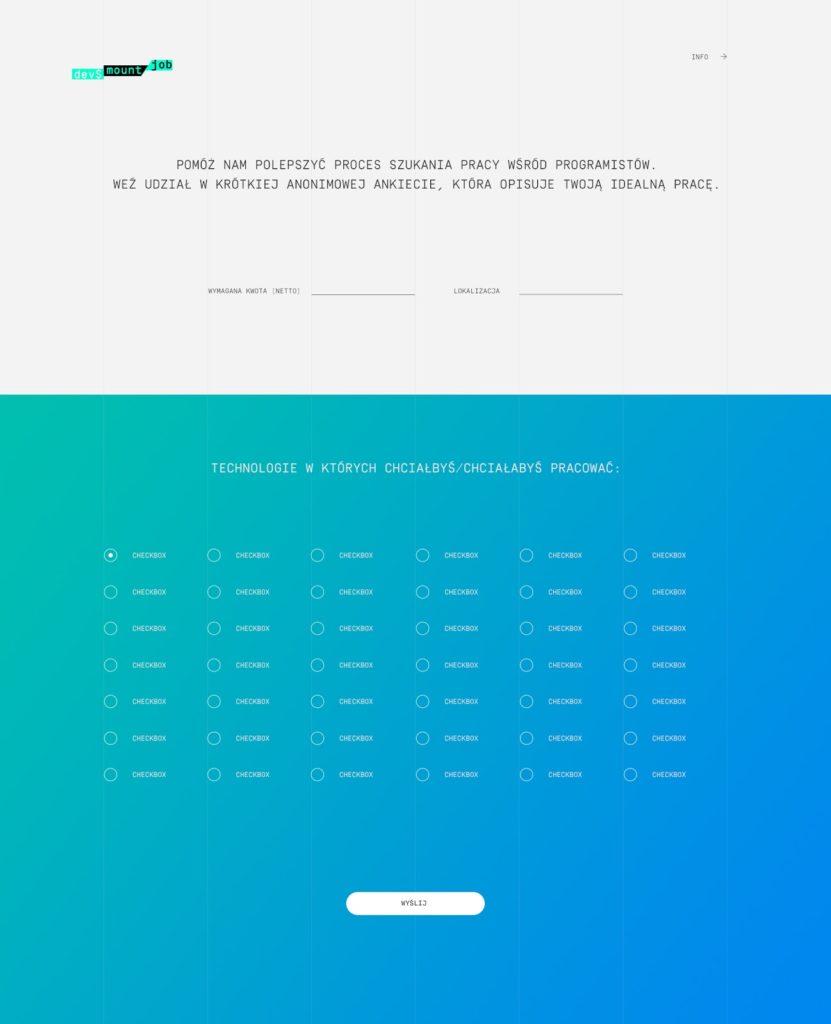
After filling in the form and submitting it, a user was redirected to a “thank you” page. There were social media widgets to allow sharing, and a form to leave an email address. You may think now that something is not right here – I was talking about anonymity, and now I ask people to leave their email. Believe me or not, but I was really serious about the anonymity of users in that product. That said, I can assure you, that email form on the thank you page was not connected in any way to the survey. The only purpose was to build a mailing list of people interested in what was going on.
When all that was ready, my video was added to the vlog’s episode. There were no details about the product itself, just asking people to take part in the survey. I don’t recall exactly, but the numbers were around: 300 took part in the survey, and 100 subscribed to the mailing list. That was a great success for me.
First things first
Now let’s focus on “the most important” things in running your own business: the name and the logo. How are people going to fill in the form if there is no logo and name? Yup… That was me thinking about business back then ;). Nevertheless, the story is quite interesting, so I will describe it here.
Some time ago, I was working on a small side project with a guy who got his Ph.D. in History of Art. He came up with the name and designs for that project. I really liked them and the whole idea behind them. That’s why I asked him for help, as “Developers For Sale” doesn’t sound good ;). As he is also a Linux user, after a few days, he got back to me with the idea of “mounting a new job by developer” from a command line. Like you would mount a resource in Linux. It would look like this in CLI:

I was delighted. This was not only because of a reference to a command line but also as there was a “$” sign. Moreover, “mount” can bring to mind mountains (Mount Everest), which may be a reference to the career path. Mind blown, isn’t it?
Then I described the whole idea to the designer, and after a few days, I got such visualizations:
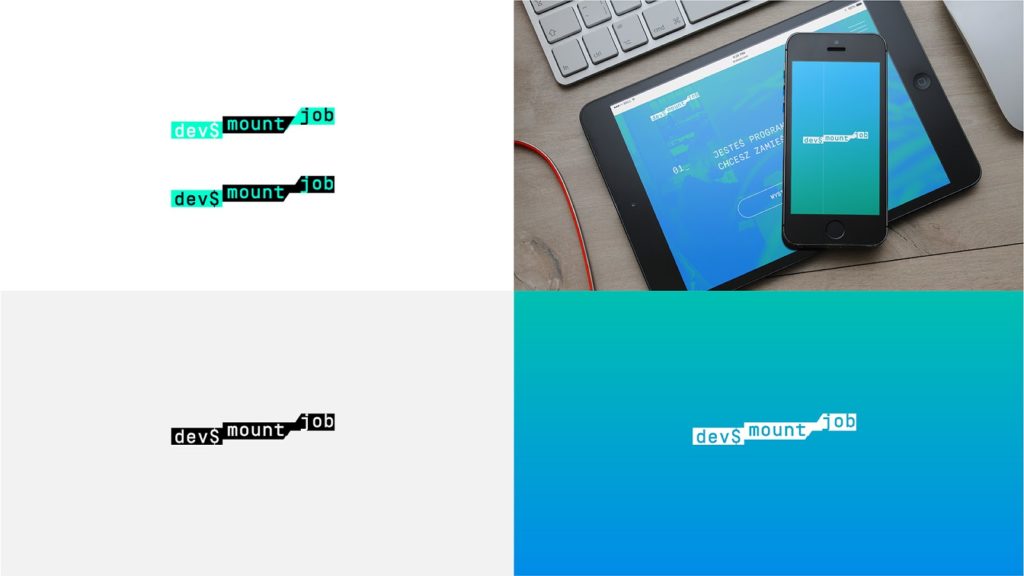
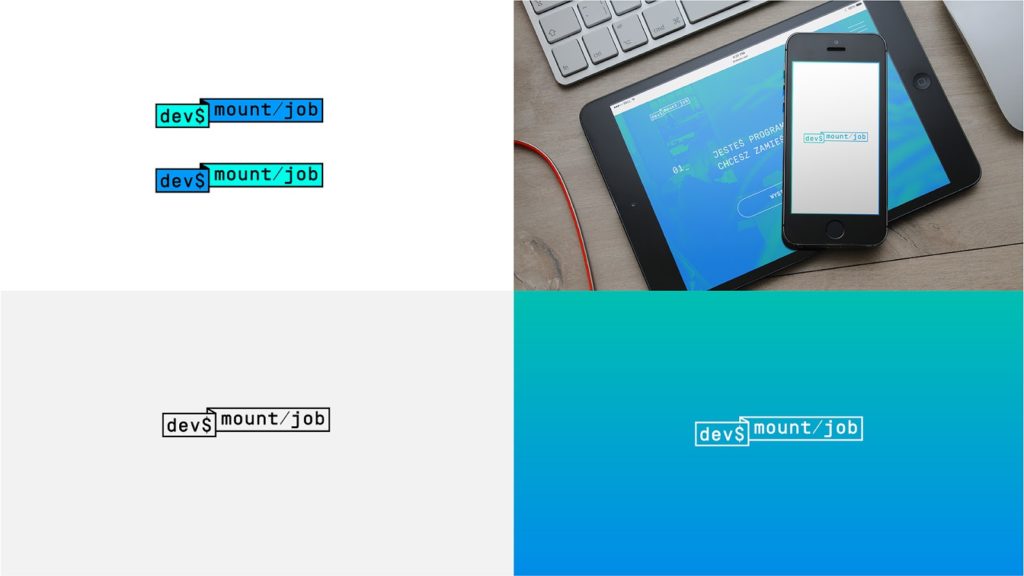
The first one got my attention, but now when I look at them, maybe I would choose the second one, as it’s a bit retro. Which one do you like better?
Both of them refer to a command line, and both have a “$” sign. Maybe its meaning is not so obvious when you take a look at it for the first time, but I was really proud of it. In case of earning millions of dollars on my new SaaS, I was prepared to explain this deep meaning in interviews ;).
Designs
I knew what kind of views/pages I wanted to have, so I prepared quite detailed mockups. I sent them and a project description to the designer, and, after a few days, I had the first version that I accepted. You can see them below:
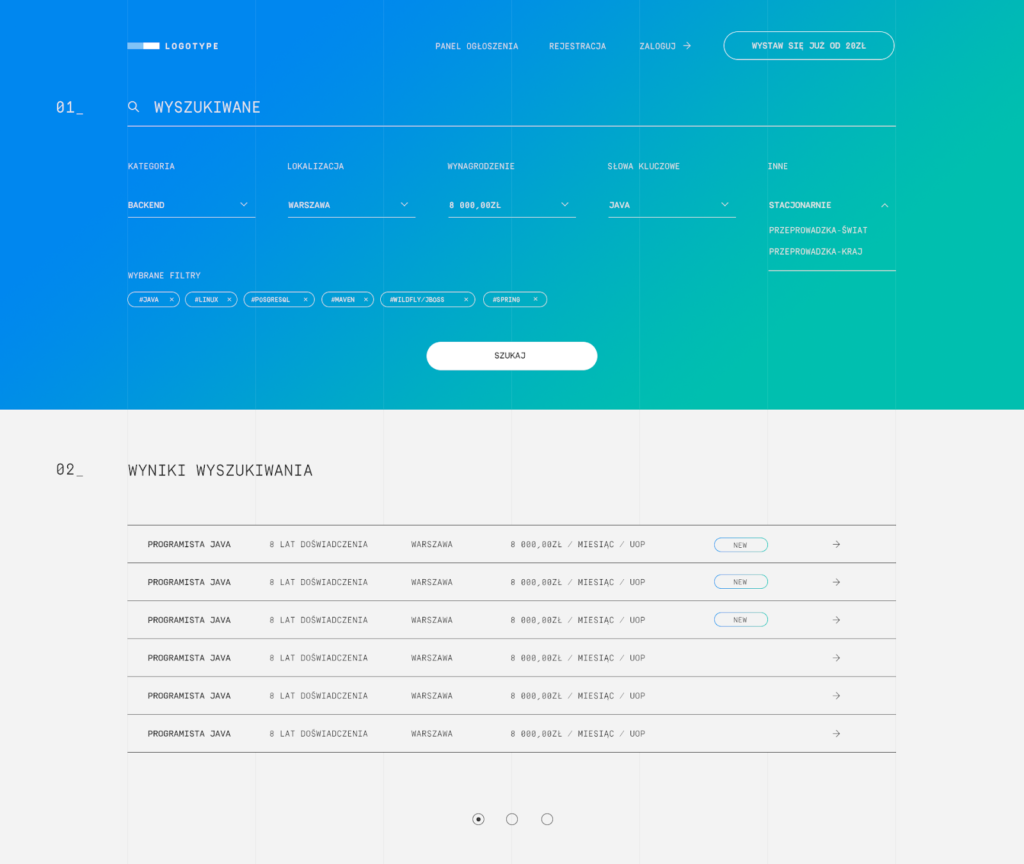
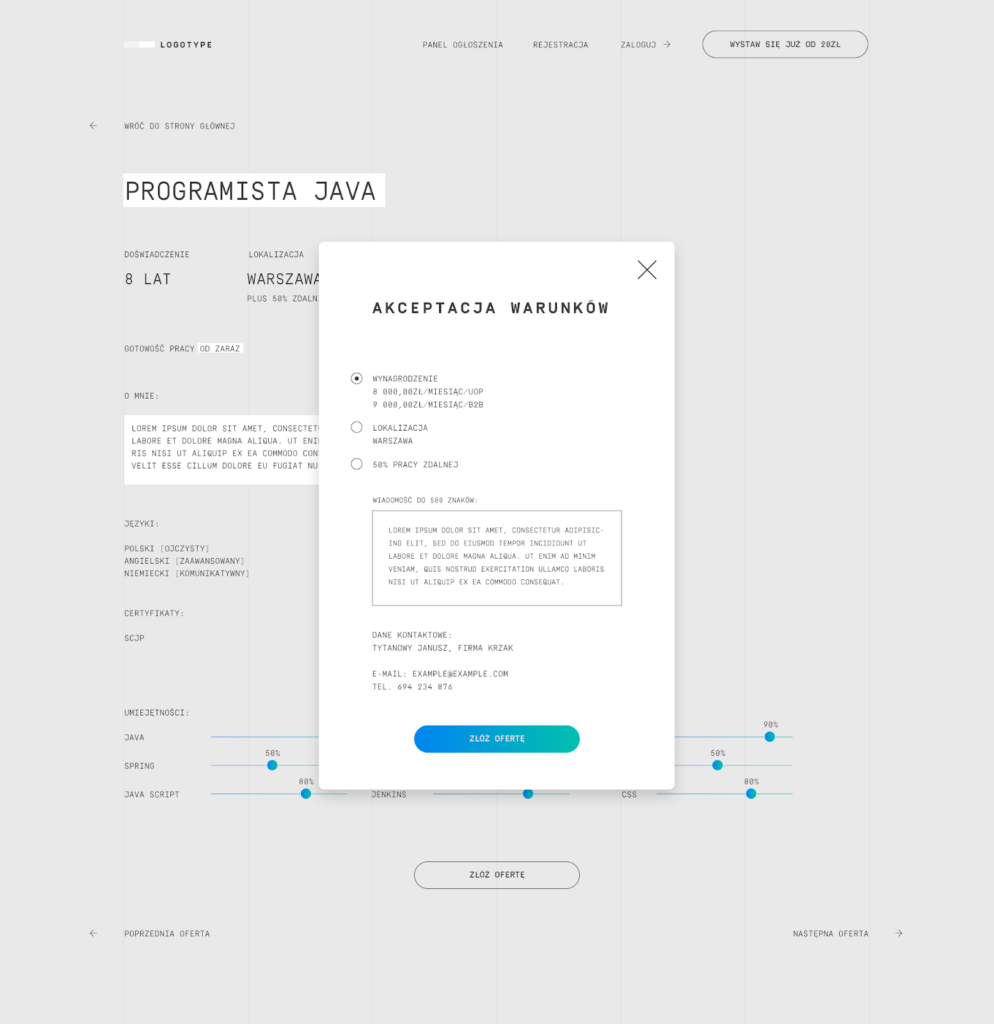
We are almost there…
Now the fun begins. Long story short, while working on designs, I asked the designer to also prepare designs for the survey form. Everyone knows it has to be custom, with a logo, etc. Instead of taking some out of the box survey tool, I decided to develop it from scratch and host on Elastic Beanstalk, as I really like AWS services. So I did…

A few days later, the survey was deployed and was ready for traffic. Results I showed you a few chapters earlier.
The “post-survey” era
After initial success, I was thinking about how to get my great product even more traffic. I thought that content marketing would do the job there. My thinking was as follows:
- write an article (mentioned in the previous post, link here),
- submit it to Hacker News,
- watch the mailing list grow to thousands of emails.
Well, as you can expect – it didn’t happen.
Writing an article took me quite a lot of time. I had some doubts that people reading it would hear my Central European accent, so I sent it to review to a friend of mine who is a great philologist. Fortunately, it was quite good, and only a few more natural collocations were added. Moreover, I thought that instead of stock photos, I would like to have some eye-catching sketches, so I asked a drafter to do them. Then everything was ready, I could submit my article about changing the world to HN and… nothing happened. I saw in Medium’s statistics that people were reading it, but only a few subscribed to the mailing list. Then I was sending back the link to the article in reply messages to job offers that I was getting at that time. It turned out that recruiters were quite interested in the idea. I was noting their contact details to let them know when I was ready with my product as I was supposed “to start soon.” As an idea without execution is nothing, I’ve never got back to them.
We got to the stage when I got really tired of all that “entrepreneurial life.” I was thinking of delegating the implementation of the prototype to another friend of mine. He wanted to play a bit with AWS, so we cut a deal pretty quickly as it was a win-win situation. A month later, I had a clickable prototype that I didn’t show to anybody. I think that besides personal reasons for not launching it, I also lost faith in its success. Some kind of excuses appeared, that probably would be better identified here by some coaching gurus, so let’s leave it here for them 😉
What went wrong?
You probably already know what went wrong, but let me say that loudly. I focused on totally not important things, instead of focusing on my potential clients, getting to know their pains, observing them, analyzing their behavior, supporting them, and building a community. I did research supposedly, but that’s like with any other research – you can come up with such results that will support any thesis. Worst of all, I was defending the idea only because I wanted to do it.
With the benefit of hindsight and after seeing some success stories, I can admit that those totally unnecessary activities were: logo, designs, video, drawings, article, overthinking… All that consumed too much of my time, energy, and money. As a result, nothing was left for delivering real value and solving other people’s problems. That’s why I’d advise against taking such an approach in launching your side projects. Nevertheless, every cloud has a silver lining – at least we have a lot of resources and an exciting business domain to model.
If you have any questions about any of the fragments of this post, feel free to ask in the comments section, and I will reply. I also encourage you to share your experiences as I know that I’m not alone in such an approach to side projects 😉
Last but not least, there is some really great stuff coming in the next posts about Event Stormings and Domain-Driven Design, so don’t miss it and subscribe to the newsletter below.
